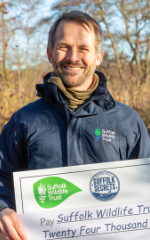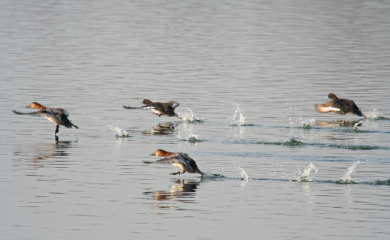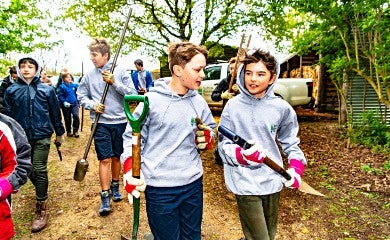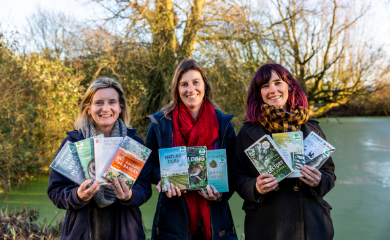An Update from the Wild
Published: Wednesday 12th Feb 2020
Written by: Sally Owen
Here at Suffolk Secrets we know that many of our guests come to Suffolk to enjoy our wildlife and nature. As a proud supporter of Suffolk Wildlife Trust we're delighted to bring you the first of a series of seasonal updates from around the county's nature reserves.
In this blog Michael Strand, Community and Fundraising Manager for Suffolk Wildlife Trust, gives a round up of what's been happening across the Suffolk reserves recently.

Winter Birds

With Suffolk’s network of rivers, lakes, ponds and marshland, the county is brilliant place for winter ducks and geese. Some of the best reserves to visit to enjoy the sight of hundreds, sometimes thousands, of birds feeding and resting together are Lackford Lakes, near Bury St Edmunds, and Carlton Marshes, near Lowestoft.
Carlton Marshes Nature Reserve is now looking like a wetland wonderland, with the habitat creation almost completed. The rising water levels means wildlife is starting to appear, and this winter has seen lapwing making the most of the reserve while cranes roosted for 10 days! The numbers of teal have already reached 500 with more to still arrive. Wigeon numbers are also growing, with some performing aerial acrobatics in the winter skies, quite often under the watchful eye of a peregrine. Marsh harriers, bitterns and now bearded tits are now often seen along the reeded edges of the new habitat.
The place to look for our water birds at Lackford has been the sailing lake and the slough. These areas continue to hold large numbers of water birds. On the sailing lake look out for goldeneye, tufted duck, pochard, wigeon and gadwall. The slough is good for lapwing, shoveler and teal. The odd shelduck is also present in this area. We have had an explosion of snipe over the last few weeks and around 30 are present on the slough – best viewing from our short stay viewing hide (Bernard’s). Kingfisher is also showing well on the slough area.
Young Wardens

Our Young Warden sessions are proving to be especially popular, with children and teenagers aged between 11 and 16 making a real contribution to the health of Suffolk’s wildlife. Most recently our Lackford Lakes team coppiced willow and alder along the edges of some of the lakes using bowsaws and loppers. While a bit of hard graft always helps to stave off the cold, the youngsters also warmed up around one of our fire sleds – cooking jacket potatoes in the bonfire. The sessions vary throughout the year to give the young wardens a good taste of what a career in conservation looks like. This year has included reptile surveys, moth ID sessions, pond maintenance and the trapping (and eating) of invasive American red signal crayfish
Wild Reads

Suffolk Wildlife Trust and Suffolk Libraries recently launched a new partnership project to connect the natural world and the written word and celebrate the different ways authors relate to nature.
The Wild Reads project will run throughout 2020 and aims to give everyone the opportunity to enjoy the very best nature writing. The aim is to help inspire and ignite a love of nature in readers through the lenses of a wide variety of writers. A Wild Reads collection of ten books has been selected including authors such as the BBC’s Kate Humble, Isabella Tree and Melissa Harrison. Suffolk Wildlife Trust and Suffolk Libraries will also be hosting book-related events, readings and discussions as well as walks and activities to promote Wild Reads. Wild Reads books will be available across Suffolk, with collections available from Lowestoft and Bury St Edmunds libraries.
